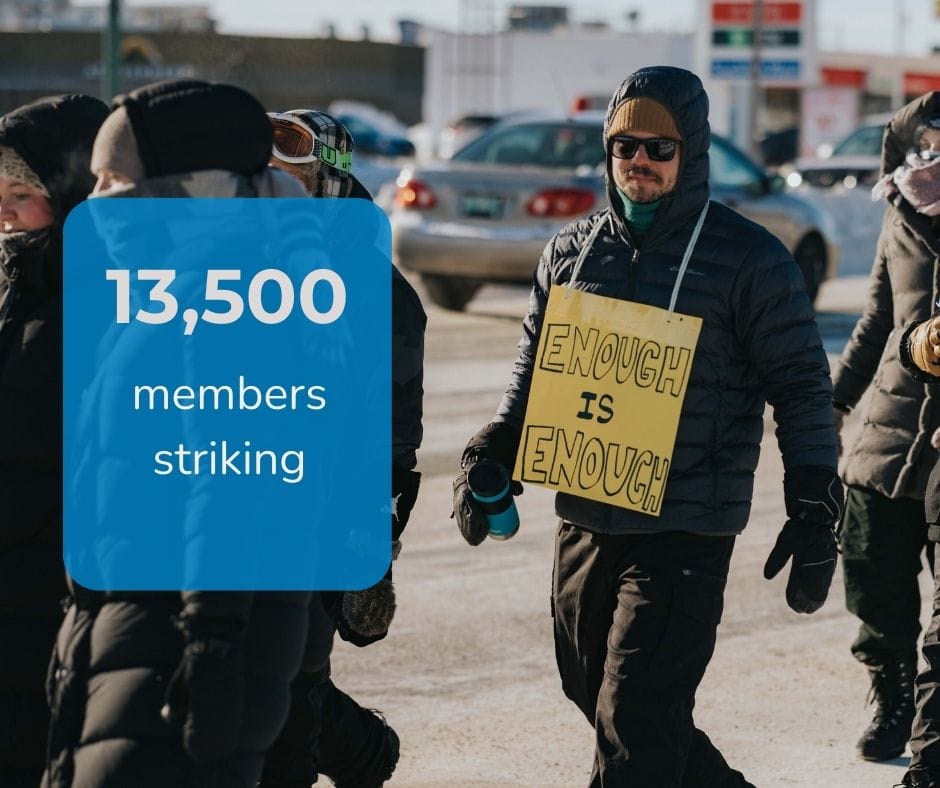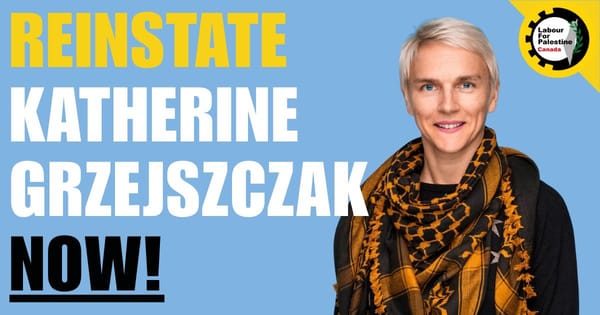
Saskatchewan teachers are in a pitched battle with conservative premier Scott Moe and his minister of education, Jeremy Cockrill.
On February 1, five locals of the Saskatchewan Teachers’ Federation (STF) launched a third day of rotating strikes at school boards across the province. Prior to this latest action, teachers engaged in one-day, province-wide strikes on January 16 and 22 after bargaining over a new collective agreement with the province hit a wall. The CBC reports that roughly 13,000 teachers participated in the January 16 strike day. According to the union, teachers and community members picketed and rallied at 35 “demonstration sites” across the province on the second day of strike action. This is the first time the STF has struck since 2011.
Like education workers in many other provinces, STF members are facing down a right-wing government committed to public austerity. Once again, teachers and students are being forced to bear the brunt of government cuts. But Saskatchewan’s teachers are fighting back.
The primary issues in the dispute revolve around the Saskatchewan government’s refusal to bargain over issues related to class size and class composition (a workload issue having to do with the distribution of students with specialized needs across classrooms). According to the government, these are issues outside the scope of central bargaining with the province and best left to local school boards to determine.
This is an astonishing claim. Teachers’ unions across Canada regularly bargain class size and composition language into their central bargaining agreements to ensure uniformity across whichever province they are in. As teachers’ unions understand it, classroom size and composition are fundamentally issues of workload, as the number and needs of students in class directly impacts the scale and scope of teachers’ duties.
Ontario elementary and secondary school teachers’ unions bargain over these issues and have current contract language setting out class size ratios. Similar language in Quebec teachers’ contracts addresses the workload impacts of classroom composition. Perhaps most consequentially, in 2016 the Supreme Court of Canada ruled that the government of British Columbia had infringed on the bargaining rights of teachers in that province by refusing to negotiate class sizes with the B.C. Teachers’ Federation.
Yet Moe’s government insists that class size is not a bargainable issue and is best addressed by local school boards. After years of inadequate funding that has not kept pace with inflation or student enrolment growth, thinly spread resources leave local regions ill-equipped to deal with the shortfalls.
Additionally, the union has been pressing the government to address the growing issue of violence in classrooms across the province. This is directly related to class composition. Students with specialized needs require additional supports, an issue the union takes very seriously. When teachers don’t have an adequate say over how their classes are organized, the risk of classroom violence increases.
As CTV News Saskatoon reported, STF president Samantha Becotte informed members at the union’s meeting announcing the strike vote results that the government had been “dismissive” of injuries sustained by teachers, such as broken bones and black eyes. It’s this type of disrespect that has contributed to teachers’ willingness to strike.
This is not the first time that the STF has taken issue with what it perceives as the Moe government’s disrespect for teachers and their professional autonomy. This past summer, when the government passed its controversial ‘pronoun’ law — requiring parental permission for students under the age of 16 to change their name or preferred pronoun at school — teachers understood this as an attack on their ability to provide necessary support to trans students. The government maintained that the change was a matter of parental rights. The teachers’ union made its opposition to the policy clear, including for reasons of professional autonomy and student safety and well-being.
As Charles Smith, associate professor in the department of political studies at St. Thomas More College in Saskatoon, told Class Struggle, “The attack on trans kids was horrible, and the STF and many teachers spoke out against it. [W]hat the anti-trans bill showed is that the government had little respect for teachers and the work that teachers do. The bill bought in to a narrative, that was never defended with actual evidence, that teachers were shielding information from parents rather than being professionals who respected the autonomy and safety of their students. From that perspective, the government’s actions on this issue reinforced the notion that teachers were a part of the problem and needed to be reigned in.”
Teachers, it seems, are organized and behind their union’s decision to strike. On Oct. 16, 2023, the union announced that 95 per cent of teachers voted to authorize the strike after the union declared an impasse in bargaining with the employer. Teachers have been without a contract since August 2023, though bargaining began in May.
Conciliation board meetings meant to assist the two parties in reaching a settlement concluded in mid-December after making little headway. As the STF informed parents and students, the failure to make progress toward a new contract was the result of the government’s unwavering refusal to bargain over class size and composition and violence in the workplace. Throughout, these have remained the seemingly intractable sticking points.
The conciliation report produced following these meetings concluded that teachers have a right to bargain over their working conditions, which the STF interprets as meaning a right to negotiate over class size and complexity issues, as teachers in other provinces do. But this hasn't moved the province on the issue.
Thus far, it seems parents and a large segment of the broader public are supporting the teachers. As Smith relayed, “There is a clear sense that the problems the teachers are highlighting (classroom overcrowding and classroom complexity, lack of educational assistants or EAL [English as an Additional Language] supports) are reflective of the problems that many parents and caregivers have been noticing for years.” Supporters of the teachers sent more than 18,000 email and phone messages to Cockrill, Moe and members of the legislative assembly, according to the union.
The government, on the other hand, has been waging a media campaign against the teachers instead of bargaining over the issues raised by the STF.
Despite the STF repeatedly emphasizing that class size and composition are their central concerns, the government has engaged in a concerted effort to paint the teachers as overpaid and to generally frame the dispute as monetary. Since the summer, Moe’s government has been running an advertising campaign using questionable teacher salary figures and claiming that its offer of 7 per cent over three years is a “fair deal.”
Teachers are asking for 2 per cent annual wage increases along with contract language to tie salaries to inflation. But as the STF has emphasized, this is not primarily a dispute about pay. For the union, this is a battle over the teaching and learning conditions of STF members and their students. Relatedly, the STF is standing up for substitute teachers by demanding a provincial minimum salary, access to paid sick leave and representation by STF for these workers.
As Smith summarized to Class Struggle: “The government is eager to change the channel and say this is all about wages and that they simply will not negotiate on class size and complexity. The STF has been clear that wages are not its central concern, but is eager to see some sort of COLA [cost-of-living allowance] clause in the agreement. The government had already tried to wage-shame the union during negotiations in the summer by taking out a bunch of public ads to claim that Saskatchewan teachers were the highest paid in Western Canada, although those numbers are suspect given the wage tiers and scales within the STF agreement. Now, the government is claiming the STF wants a 23.5 per cent wage increase, which they’ve based on really suspicious predictions of inflation over the next few years. In short, the wage battle is one-sided and clearly the government is trying to shame teachers as being greedy.”
As it stands, the limited strike actions taken by the STF haven’t moved Moe and his government from their intransigent position. In all likelihood, we are looking at escalating walk-outs, and perhaps an unlimited strike, in the coming days or weeks.
The outcome of this battle will have significant impacts on both the working conditions of Saskatchewan teachers and learning environments of students across the province.
Indeed, as teachers’ unions across North America have repeatedly emphasized over the last several years, teachers’ working conditions are students’ learning conditions.
Recent Class Struggle Issues
- January 22 | The Union Wage Premium Remains Strong Across Canada
- January 15 | Public Sector Pensions In New Brunswick Are At Risk
- January 8 | Ontario’s Hospital Labour Force Is At A Breaking Point
- January 3 | How Did Canadian Workers And Unions Fare In 2023?







